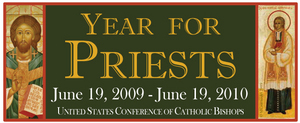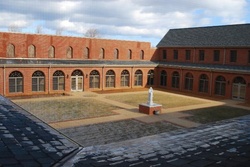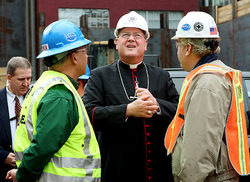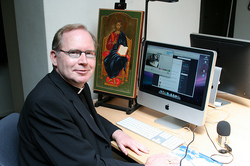The
head of the Ethiopian Orthodox Church, Abuna Pauolos, is set to unveil the Ark
of the Covenant. The Ark of the Covenant has been in the guardianship of the
Ethiopian Orthodox Church in a chapel in the Church of Our Lady, Mary of Zion.
But with many religious icons and relics the Ark has been claimed by a number of
people over the years, some credible and many not so believable. There is no reason I know of to doubt the authenticity of the Ark that’s with the Patriarch.
We don’t hear
much of the Ark of Covenant today except for intro Scripture classes; however,
it should be noted that the Ark is a unit of learning in the Catechesis of the
Good Shepherd (a catechetical program for little people developed around a
Montessori method). The relevance of the Ark, you will remember, is that it was
God’s command that the Ark be built to contain the tablets of the Decalogue
(the 10 Commandment), Aaron’s rod and manna. On the theological level the Ark
is emblematic of the Covenant God had with His people (Israel). Today, a
theology of Covenant continues but not in tablets or an Ark but in a
Person–Jesus Christ. Catholics honor and follow the 10 Commandments; we honor the
Ark but we worship neither. We adore, worship, and give glory to a God who
became a flesh and blood person, a man in all things like you and me except
sin; the Son of God who opened the doors of salvation for us. Catholics
believe, therefore, our salvation is not in the Commandments but from Christ
who lived, died, and resurrected. As I mentioned the Commandments are followed
and we revere the Ark so long as we recognize that they point to their fulfillment in Jesus. So learn about the Ark and pass this theology onto your
friends and family.







